If you came here expecting a discussion of the corn used to make fine Kentucky whisky, move along. This is about photography.
A recent Miami Herald article about a West Palm Beach museum includes a shot of photographer 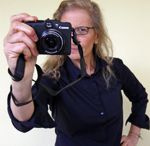 Annie Leibovitz aiming a point-and-shoot camera at the reader. Kind of reminds us that a great photographer can take a magnificent picture with pretty much any box with a hole in one end.
Annie Leibovitz aiming a point-and-shoot camera at the reader. Kind of reminds us that a great photographer can take a magnificent picture with pretty much any box with a hole in one end.
But she still has to print it. That’s where I run into difficulty.
If Ms. Leibovitz printed her photos to fit in a standard frame with a pre-cut mat, (most) arts and crafts stores carry frames and mats with openings in only these sizes:
| Frame Size | Mat Opening | Image Size | Aspect Ratio |
| 5″ x 7″ | 3.5″ x 5.5″ | 4″ x 6″ | 1.5 |
| 8″ x 10″ | 4.5″ x 6.5″ | 5″ x 7″ | 1.4 |
| 11″ x 14″ | 7.5″ x 9.5″ | 8″ x 10″ | 1.25 (about 5:4) |
| 16″ x 20″ | 10.5″ x 13.5″ | 11″ x 14″ | 1.27 |
| 20″ x 24″ | 15.5″ x 19.5″ | 16″ x 20″ | 1.25 |
| 24″ x 36″ | 19.5″ x 29.5″ | 20″ x 30″ | 1.5 (exactly 3:2) |
| 30″ x 40″ | 21.5″ x 31.5″ | 22″ x 32″ | 1.45 |
(Frame and mat openings vary from manufacturer to manufacturer.)
Most digital point & shoot cameras had an aspect ratio of 1.33 (4:3), the same as analog television or early movies. However, a 35 mm picture’s aspect ratio is 1.5 (3:2). This means that the long side is 1.5 times as long as the short side. Several digital cameras take photos in either ratio, and nearly all digital SLRs take pictures in a 3:2 ratio, as most can use lenses designed for 35 mm film.
The Advanced Photo System (APS) film, a now-discontinued film format for still photography, has about a 7:4 aspect ratio, coincidentally almost perfect for HDTV except for how lousy an enlargement APS film yields. In 2005 Panasonic launched the first consumer digital camera with the very similar aspect ratio of 16:9; that matches HDTV and is the same as Ms. Leibovitz’ Canon G-15. 16:9 is the same as 1.77 which you might notice matches none of the standards in the table above.
Confused yet? Me, too.
I’ve taken thousands of photos with either a Kodak or Minolta digital. The Kodak has a 1/1.76″ (7.3 x 5.5 mm) CCD sensor, the Minolta a slightly larger 2/3″ (8.8 x 6.6 mm) sensor. Both are on the sweet spot 1.33 aspect ratio which means I had to throw away part of the picture for all their 8 x 10″ and 11 x 14″ prints in the gallery.
That’s one reason I changed to a full format digital for most shoots.
All these different aspect ratios is why everyone has cropping issues when printing photos. An aspect ratio of 4:3 translates to a print size of 4.5″ x 6.0″. This loses half an inch when printing on the “standard” of 4″ x 6″ with its aspect ratio of 3:2. Similar cropping occurs when printing on other sizes, i.e., 5″ x 7″, 8″ x 10″, or 11″ x 14″. In fact, the only two “standard” print sizes that capture all of the frame of a full frame digital or its 35mm uncle are 4″ x 6″ and 24″ x 30″.
There’s not much market for 4″ x 6″ or 24″ x 30″.
On the other hand, there’s a lot more market for 16″ x 20″ or 24 x 30″ than for a post card size print and I couldn’t reliably enlarge my early work to those sizes.
I want to compose in the viewfinder so I want to print what I saw. I’m homing in on 10″ x 15″ and 14″ x 21″ as the “usual” enlargements in my own gallery. The first is perfectly sized for the standard 16″ x 20″ mat; the latter for a 20″ x 28″ which is fairly large. Now all I need is a processor who can print them. And a mat cutter ditto.
Of course, every photographer has great photos in some odd-ball format, so I’ll print that palm tree with the sap bucket at 10:1 and frame it vertically. I’m working on an interesting 3:1 panorama that I will probably print on canvas and display as a loooooooooooooooog horizontal triptych.
I hope you’ll buy them anyway.
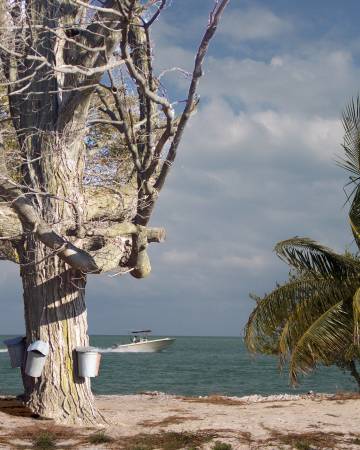

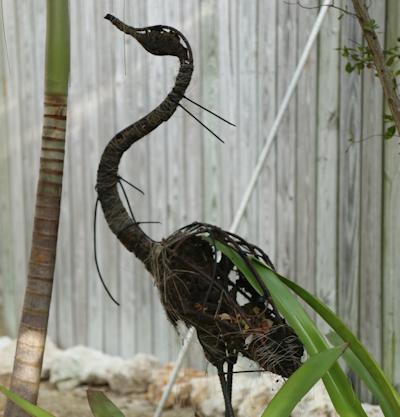
 If two guys ride one wheel each, are they really riding a bicycle-built-for-two?
If two guys ride one wheel each, are they really riding a bicycle-built-for-two?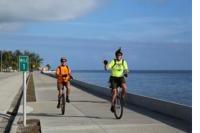
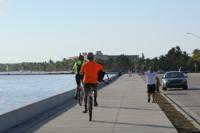
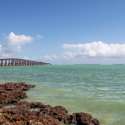 bridge
bridge